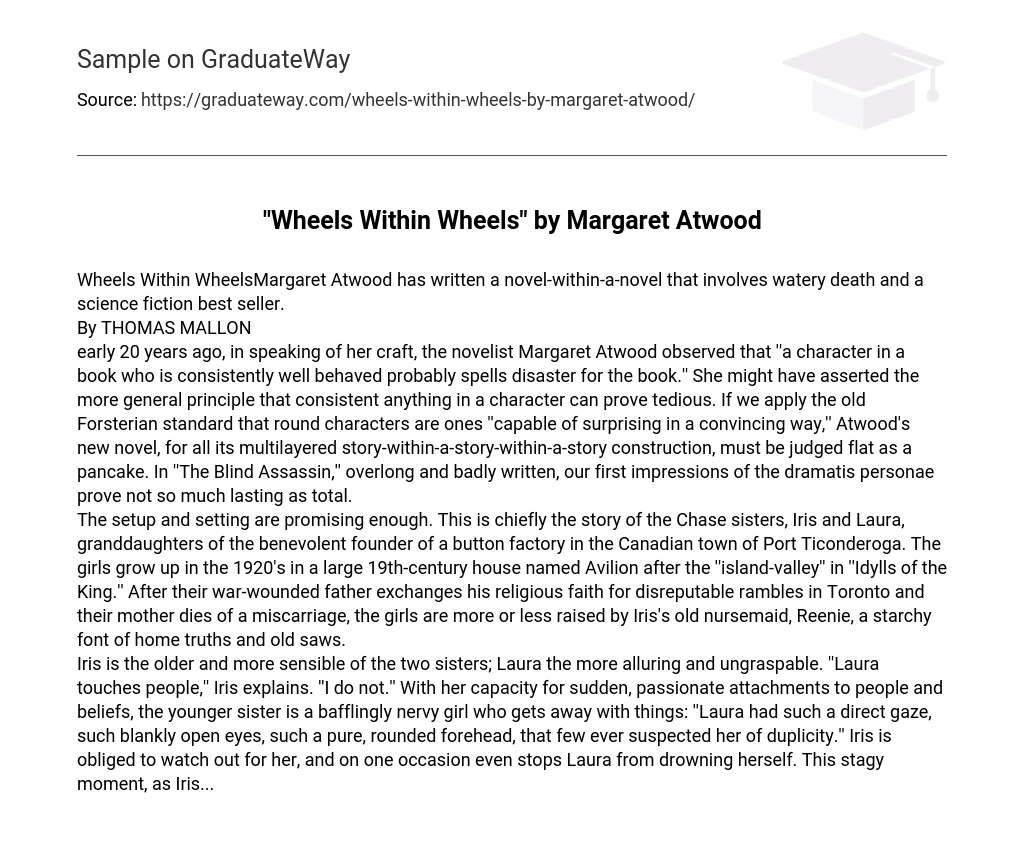Wheels Within WheelsMargaret Atwood has written a novel-within-a-novel that involves watery death and a science fiction best seller.
By THOMAS MALLON early 20 years ago, in speaking of her craft, the novelist Margaret Atwood observed that ”a character in a book who is consistently well behaved probably spells disaster for the book.” She might have asserted the more general principle that consistent anything in a character can prove tedious. If we apply the old Forsterian standard that round characters are ones ”capable of surprising in a convincing way,” Atwood’s new novel, for all its multilayered story-within-a-story-within-a-story construction, must be judged flat as a pancake. In ”The Blind Assassin,” overlong and badly written, our first impressions of the dramatis personae prove not so much lasting as total. The setup and setting are promising enough. This is chiefly the story of the Chase sisters, Iris and Laura, granddaughters of the benevolent founder of a button factory in the Canadian town of Port Ticonderoga.
The girls grow up in the 1920’s in a large 19th-century house named Avilion after the ”island-valley” in ”Idylls of the King.” After their war-wounded father exchanges his religious faith for disreputable rambles in Toronto and their mother dies of a miscarriage, the girls are more or less raised by Iris’s old nursemaid, Reenie, a starchy font of home truths and old saws. Iris is the older and more sensible of the two sisters; Laura the more alluring and ungraspable. ”Laura touches people,” Iris explains. ”I do not.” With her capacity for sudden, passionate attachments to people and beliefs, the younger sister is a bafflingly nervy girl who gets away with things: ”Laura had such a direct gaze, such blankly open eyes, such a pure, rounded forehead, that few ever suspected her of duplicity.” Iris is obliged to watch out for her, and on one occasion even stops Laura from drowning herself. This stagy moment, as Iris…





